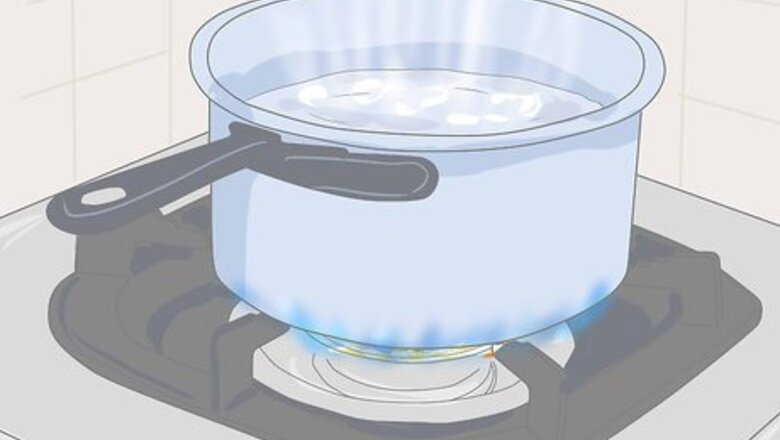
views
X
Research source
Using the Stovetop
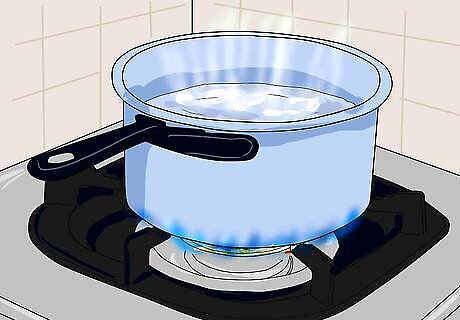
Heat liquids and saucy foods in a saucepan. Transfer the food to a saucepan and add ¼ cup (59 ml) of water to prevent the food from scorching. Turn the heat to medium and put on a lid. Stir regularly as the food heats up. Depending on how much food you have, reheating could take about 20 minutes. Ideal foods to reheat in this way include soups, stews, liquids, beverages, and chili. For beverages, avoid adding additional water.

Pan fry rice and noodles. Add a tablespoon (15 ml) of cooking oil or butter to a skillet or cast iron pan. Heat the skillet over medium heat. When the oil is shimmering, add your food. Cook for about five minutes, and then use a spatula to flip the food. Cook for another five minutes, or until it’s heated through. This method is ideal for noodles, pasta, rice, or other grains. You can also use this method with beans. Frying in a bit of oil will make the noodles or rice slightly crispy.
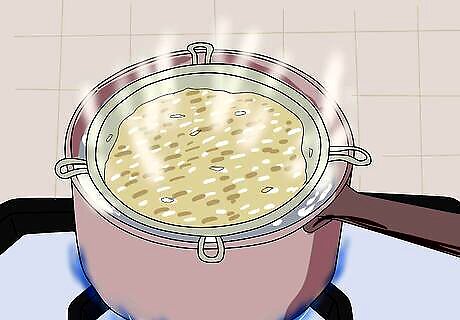
Reheat grains with extra water. Another way to reheat rice and other grains is in a pot with some extra water. The water will add moisture back to the grains, and will bring the grains back to their original consistency. Pour the grains into a pot with ½ cup (118 ml) of water or broth. Heat the grains on medium until warmed through. As the grains cook, stir them every five minutes to ensure even heating.
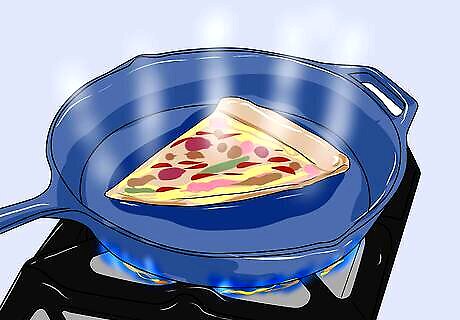
Crisp up pizza slices in a skillet. Turning on the oven for a slice of pizza is a waste of energy, and you can actually get a crispier crust by pan frying. Heat a dry cast iron pan or skillet over medium heat. Add the pizza and place a lid over the pan. Heat the pizza for three to four minutes, until it’s hot and the cheese is gooey.
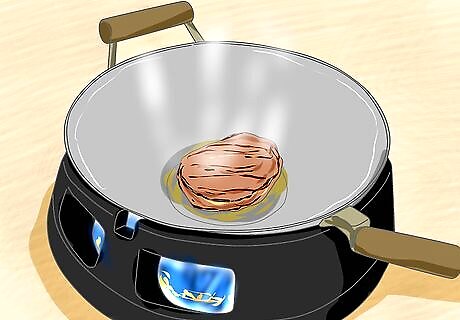
Warm up meat and stir fries in a pan. Add a tablespoon (15 ml) of oil or butter to a skillet, wok, or cast iron pan. Heat the oil over medium heat. When the oil starts to shimmer, add your meat or stir fry and turn the heat to low. Cook and stir regularly for 10 to 15 minutes, until the dish is warmed through.
Reheating in the Oven

Decide what foods to reheat in the oven. The oven or toaster oven is a great way to reheat a number of different foods, but it’s not ideal for everything. For smaller portions, use a toaster oven to conserve energy. Here are a few of the foods you can bake to reheat: Seafood Bread and baked goods Fried foods Breaded foods Roasted meat and vegetables Grilled meat Pizza (when you have more than a few slices) Lasagna Casseroles Foods that were baked to begin with

Cut large items into smaller pieces. Thick foods like large pieces of meat, lasagna, and casseroles will take a long time to heat through in the oven. Shorten the heating time and ensure even heating by dividing them into individual portions before recooking them.
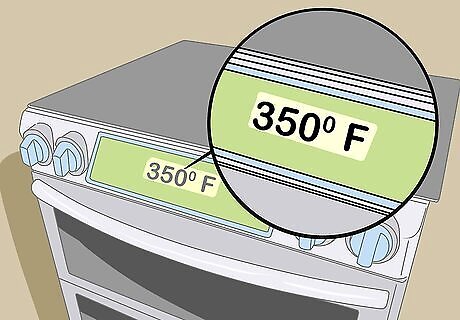
Preheat the oven. You don’t need a high temperature to reheat food, because it’s already been cooked and you don’t want it to dry out. Set the oven to 350 F (177 C) or lower and let it preheat.
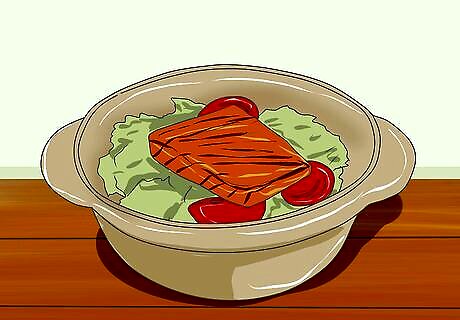
Prepare the food. Transfer the food to an oven-proof dish. To heat individual portions, separate them in the dish or use individual dishes for reheating. To keep the food from drying out, put on a lid, or use foil to cover the dish. Don’t cover foods that should be crispy, such as fried foods.
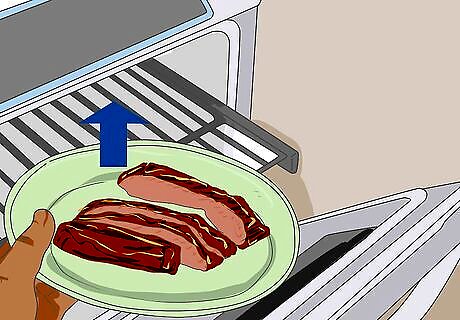
Warm the food in short intervals. Transfer the food to the oven. For smaller food and single-serving dishes, cook for five minutes and then check the temperature. For larger dishes or multiple portions, cook for 15 minutes and then check the temperature. Continue cooking in short intervals until the food is heated through. Small or thin foods like pizza may only need five minutes Baked goods, breads, and smaller cuts of meat will need around 15 minutes Thicker foods like lasagna and casserole may need 30 minutes or more
Warming Food in the Microwave
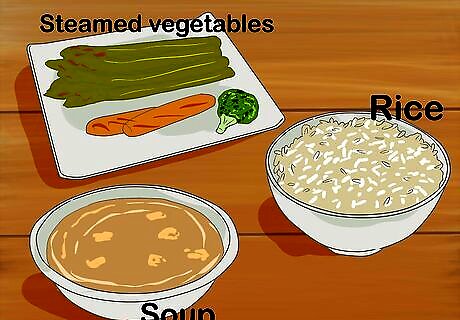
Know what foods can be heated in the microwave. Certain foods don’t reheat well in the microwave, especially ones that are supposed to be crispy or have a crust. Foods that are good to reheat in the microwave are ones that have a lot of moisture, such as: Soups Steamed vegetables Boiled vegetables Casseroles Rice Stews
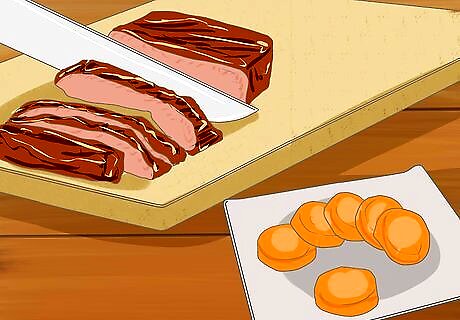
Divide foods based on cooking time. Larger items will take longer to cook, and if you try to reheat large and small items at the same time, the smaller items will be overcooked and the larger ones undercooked. You can either cut larger items into smaller pieces, or precook them before recombining the dish. For instance, if you're reheating a large piece of meat and some vegetables, cook the meat first, or cut the meat into smaller bites and cook it with the vegetables.
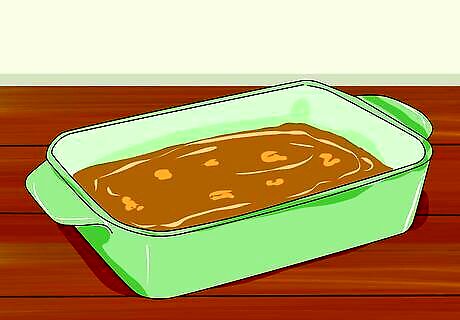
Transfer the food to a microwave-safe dish. Spread the food out in a single layer to ensure even cooking time. Make sure the dish is safe for the microwave, and doesn’t contain any metal. Dishes that are microwave-safe include glass and ceramic ones.
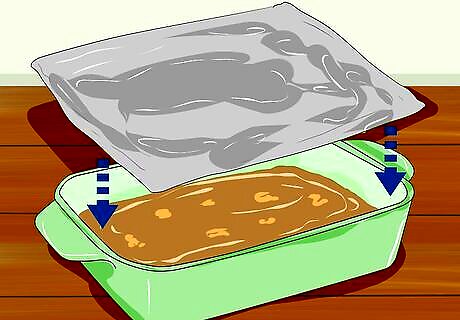
Cover the dish with a damp towel. Food cooked in the microwave is at risk of drying out, so it’s important to cover the food. Some microwave dishes come with lids, but if you don’t have one, cover the dish with a damp towel or paper towel. This will help keep in moisture. For dishes with lids, only close the lid partially to allow steam to escape.
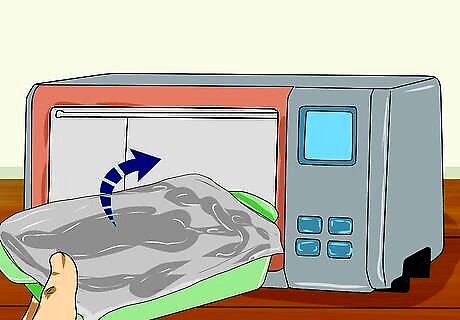
Cook the food in short intervals until heated through. For smaller servings, set the microwave to cook for one to two minutes. For larger servings, cook for three to four minutes. After that time, stir the food to distribute the heat, and then check the temperature. Cook for in additional one- to two-minute intervals until the food is hot. Stir in between each interval. Microwaves tend to have hot and cold spots, which is why stirring is so important.














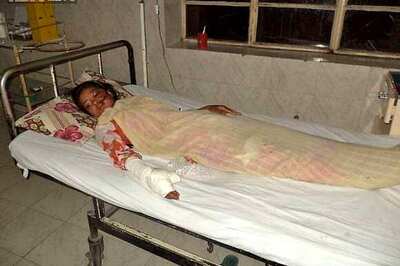





Comments
0 comment